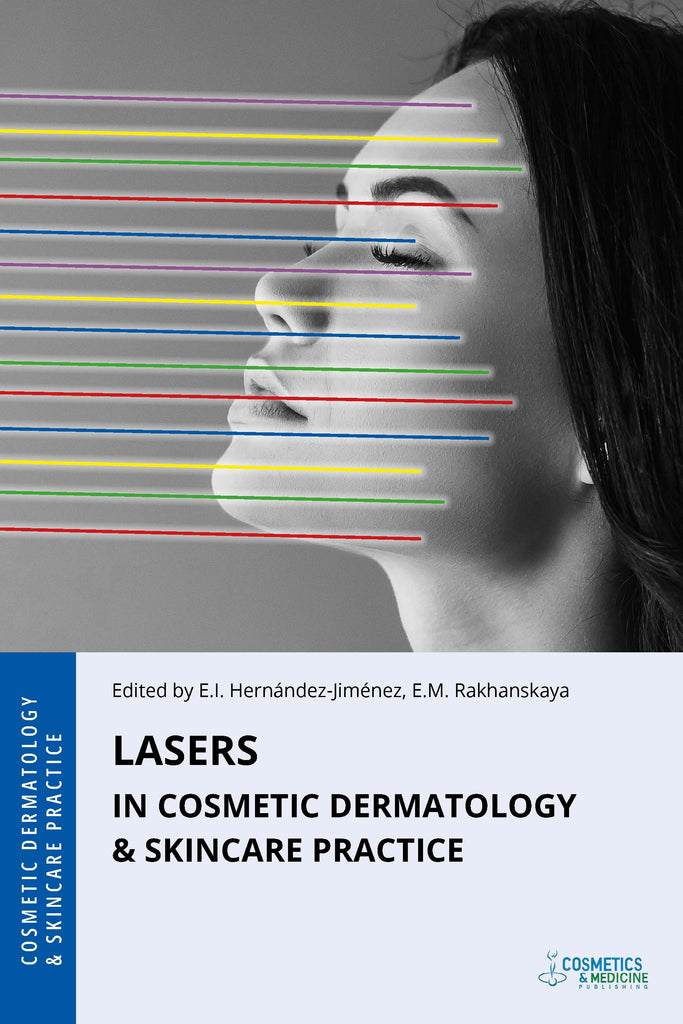- Publisher: Cosmetics & Medicine Publishing
- Format: eBook
- Pages: 208
- Language: English, Russian
- Publication date: September 10, 2024
- Product dimensions (WxHxD), cm: 15.24 x 22.86 x 1.0
- ISBN/ISSN: 978-1-970196-21-4 (paperback); 978-1-970196-40-5 (hardcover); 978-1-970196-14-6 (eBook — Adobe PDF); 978-1-970196-38-2 (eBook — ePUB)
Much has been written about lasers, but only a few books cover laser cosmetic dermatology from beginning to end. We decided to address this gap and collected all the information that would be useful for specialists in this book. It focuses on modern laser and photodynamic technologies and deals in detail with various issues concerning high-energy and low-intensity devices.
The book consists of three parts. In the first part, we explain the nature of laser radiation and provide a general understanding of how a laser device is constructed. A separate chapter is devoted to the interaction of laser radiation with the skin — the targets and mechanisms of laser action and the essence of photothermolysis. This part also considers the features of intense pulse light (IPL) treatment, low-level laser therapy (LLLT), and photodynamic therapy (PDT).
The second part is devoted to practical issues — the specific capabilities of light-based and photodynamic technologies. The entire spectrum of dermatological and aesthetic problems in which lasers and IPL devices yield significant results are considered. These are laser rejuvenation, removal of benign growths, treatment of vascular and pigmentation disorders, scars, acne, psoriasis, and onychomycosis, as well as tattoo, unwanted hair (epilation), and fat deposit removal. In this part, we also discuss the current perspectives on the combination of laser treatment and injectable procedures, and the possibilities of using lasers for the transdermal delivery of active ingredients. A separate chapter on complications associated with laser procedures and ways to reduce their risks concludes the second part.
The third part touches on some key organizational aspects, such as requirements for safe operation and the choice of laser devices.








